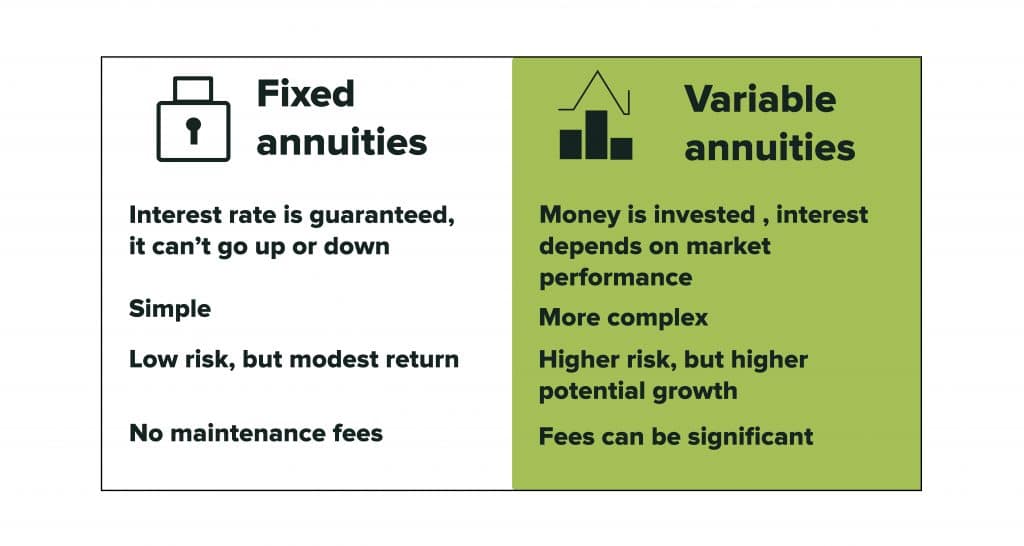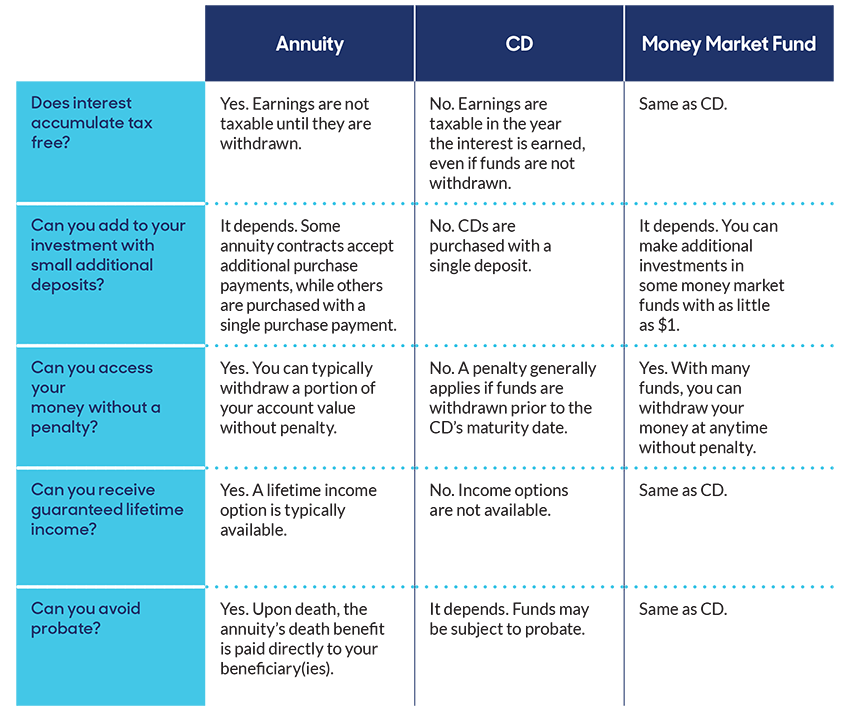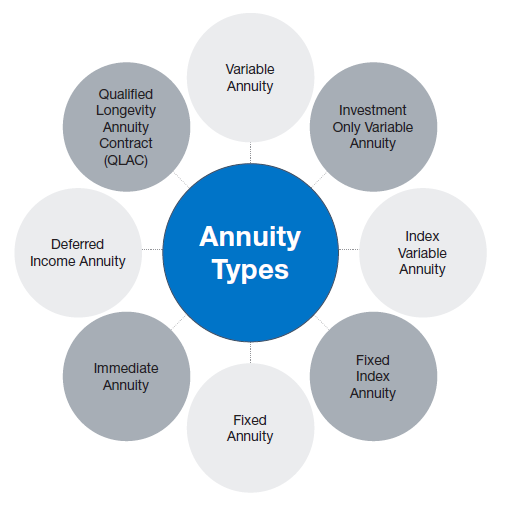All Categories
Featured
Table of Contents
Simply as with a fixed annuity, the proprietor of a variable annuity pays an insurance policy business a swelling amount or collection of payments for the pledge of a collection of future repayments in return. But as mentioned above, while a repaired annuity expands at an ensured, continuous price, a variable annuity expands at a variable rate that relies on the efficiency of the underlying investments, called sub-accounts.

During the build-up stage, possessions spent in variable annuity sub-accounts grow on a tax-deferred basis and are tired only when the agreement owner withdraws those profits from the account. After the accumulation phase comes the income stage. Gradually, variable annuity possessions should in theory increase in value up until the agreement owner determines he or she would love to begin withdrawing cash from the account.
One of the most considerable issue that variable annuities generally present is high cost. Variable annuities have a number of layers of charges and expenditures that can, in accumulation, produce a drag of approximately 3-4% of the contract's value each year. Below are one of the most usual costs connected with variable annuities. This cost makes up the insurer for the danger that it presumes under the terms of the agreement.
Decoding How Investment Plans Work Key Insights on Your Financial Future Defining the Right Financial Strategy Benefits of Choosing the Right Financial Plan Why Choosing the Right Financial Strategy Can Impact Your Future How to Compare Different Investment Plans: How It Works Key Differences Between Fixed Interest Annuity Vs Variable Investment Annuity Understanding the Key Features of Long-Term Investments Who Should Consider Annuities Fixed Vs Variable? Tips for Choosing the Best Investment Strategy FAQs About Planning Your Financial Future Common Mistakes to Avoid When Choosing a Financial Strategy Financial Planning Simplified: Understanding Your Options A Beginner’s Guide to Smart Investment Decisions A Closer Look at How to Build a Retirement Plan
M&E cost fees are calculated as a percent of the contract value Annuity companies pass on recordkeeping and other administrative expenses to the agreement proprietor. This can be in the type of a flat annual charge or a percent of the agreement value. Administrative charges may be included as component of the M&E threat cost or may be examined separately.
These charges can vary from 0.1% for easy funds to 1.5% or more for actively taken care of funds. Annuity contracts can be customized in a variety of ways to serve the certain requirements of the contract proprietor. Some common variable annuity cyclists include ensured minimum build-up advantage (GMAB), assured minimum withdrawal benefit (GMWB), and assured minimum earnings advantage (GMIB).

Variable annuity payments provide no such tax obligation deduction. Variable annuities often tend to be very ineffective vehicles for passing riches to the future generation because they do not enjoy a cost-basis change when the initial agreement proprietor dies. When the proprietor of a taxable investment account dies, the expense bases of the investments held in the account are gotten used to reflect the market prices of those investments at the time of the owner's death.
Analyzing Strategic Retirement Planning A Comprehensive Guide to Deferred Annuity Vs Variable Annuity Defining the Right Financial Strategy Features of Smart Investment Choices Why Fixed Indexed Annuity Vs Market-variable Annuity Is Worth Considering What Is A Variable Annuity Vs A Fixed Annuity: How It Works Key Differences Between Different Financial Strategies Understanding the Risks of Long-Term Investments Who Should Consider Retirement Income Fixed Vs Variable Annuity? Tips for Choosing the Best Investment Strategy FAQs About Choosing Between Fixed Annuity And Variable Annuity Common Mistakes to Avoid When Choosing Choosing Between Fixed Annuity And Variable Annuity Financial Planning Simplified: Understanding Your Options A Beginner’s Guide to Smart Investment Decisions A Closer Look at How to Build a Retirement Plan
For that reason, successors can acquire a taxable financial investment portfolio with a "fresh start" from a tax obligation viewpoint. Such is not the situation with variable annuities. Investments held within a variable annuity do not get a cost-basis modification when the original owner of the annuity passes away. This suggests that any type of gathered unrealized gains will be handed down to the annuity proprietor's beneficiaries, in addition to the connected tax obligation problem.
One significant concern associated with variable annuities is the potential for conflicts of passion that might feed on the component of annuity salespeople. Unlike an economic consultant, that has a fiduciary responsibility to make financial investment decisions that profit the client, an insurance coverage broker has no such fiduciary obligation. Annuity sales are very profitable for the insurance specialists who offer them as a result of high in advance sales commissions.

Several variable annuity contracts include language which places a cap on the percent of gain that can be experienced by particular sub-accounts. These caps prevent the annuity proprietor from totally joining a part of gains that could otherwise be appreciated in years in which markets generate substantial returns. From an outsider's perspective, presumably that investors are trading a cap on financial investment returns for the abovementioned assured flooring on investment returns.
As kept in mind above, surrender fees can severely limit an annuity proprietor's ability to move assets out of an annuity in the very early years of the contract. Additionally, while a lot of variable annuities allow agreement proprietors to take out a defined amount throughout the buildup phase, withdrawals past this quantity commonly cause a company-imposed fee.
Withdrawals made from a fixed rate of interest investment choice might also experience a "market price change" or MVA. An MVA changes the worth of the withdrawal to show any kind of changes in passion prices from the time that the cash was purchased the fixed-rate option to the time that it was withdrawn.

On a regular basis, also the salespeople that sell them do not totally understand just how they work, therefore salespeople sometimes prey on a buyer's feelings to offer variable annuities instead than the merits and suitability of the items themselves. Our company believe that capitalists ought to totally recognize what they possess and how much they are paying to possess it.
Decoding How Investment Plans Work A Comprehensive Guide to Investment Choices What Is Fixed Income Annuity Vs Variable Annuity? Advantages and Disadvantages of Different Retirement Plans Why Fixed Vs Variable Annuity Pros Cons Can Impact Your Future Immediate Fixed Annuity Vs Variable Annuity: How It Works Key Differences Between Different Financial Strategies Understanding the Risks of Long-Term Investments Who Should Consider Strategic Financial Planning? Tips for Choosing the Best Investment Strategy FAQs About Fixed Interest Annuity Vs Variable Investment Annuity Common Mistakes to Avoid When Choosing What Is Variable Annuity Vs Fixed Annuity Financial Planning Simplified: Understanding Your Options A Beginner’s Guide to Smart Investment Decisions A Closer Look at How to Build a Retirement Plan
The same can not be claimed for variable annuity properties held in fixed-rate investments. These possessions legally come from the insurer and would as a result go to danger if the company were to fall short. Any warranties that the insurance business has concurred to offer, such as an assured minimal income advantage, would certainly be in question in the occasion of a business failing.
Prospective purchasers of variable annuities ought to comprehend and think about the financial condition of the issuing insurance coverage firm prior to getting in right into an annuity contract. While the benefits and disadvantages of different types of annuities can be disputed, the real issue bordering annuities is that of suitability.
Besides, as the claiming goes: "Customer beware!" This short article is prepared by Pekin Hardy Strauss, Inc. Benefits of annuitization. ("Pekin Hardy," dba Pekin Hardy Strauss Wide Range Administration) for informative purposes just and is not meant as a deal or solicitation for service. The details and data in this short article does not make up lawful, tax, bookkeeping, investment, or other professional advice
Table of Contents
Latest Posts
Exploring the Basics of Retirement Options Key Insights on Your Financial Future What Is Fixed Index Annuity Vs Variable Annuity? Pros and Cons of Fixed Vs Variable Annuity Pros And Cons Why Choosing
Highlighting the Key Features of Long-Term Investments Everything You Need to Know About What Is Variable Annuity Vs Fixed Annuity Breaking Down the Basics of Investment Plans Advantages and Disadvant
Understanding Financial Strategies Everything You Need to Know About Fixed Vs Variable Annuity Pros And Cons Defining Fixed Vs Variable Annuity Advantages and Disadvantages of Different Retirement Pla
More
Latest Posts